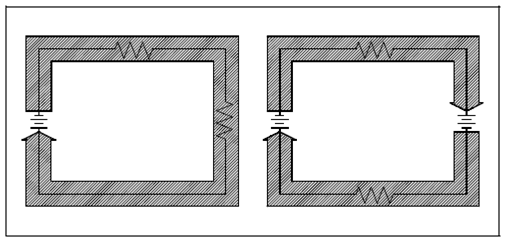Kirchhoff's Voltage Law:
Kirchhoff's first law is also known as his "voltage law." A voltage law provides the relationship among the "voltage drops" around any closed loop in a circuit, and the voltage sources in the particular loop. The total of these two quantities is always equal. The given equation form:
Esource = E1 + E2 + E3 + etc. = I1R1 + I2R2 + I3R3 + etc.
∑Esource = ∑IR (2-14)
where the symbol ∑ (the Greek letter sigma) means "the sum of."
Kirchhoff's voltage law could be applied only to closed loops show in the Figure. Closed loops have to meet two conditions:
1. It must have one or more voltage sources.
2. It must have a complete path for current flow from some point, around the loop and back to that point.

Figure: Closed Loop
You will notice that in a simple series circuit, the sum of the voltage drops around the circuit is equal to the applied voltage. In fact, this is Kirchhoff's voltage law applied to the easiest case, which is, where there is only one loop and one voltage source.